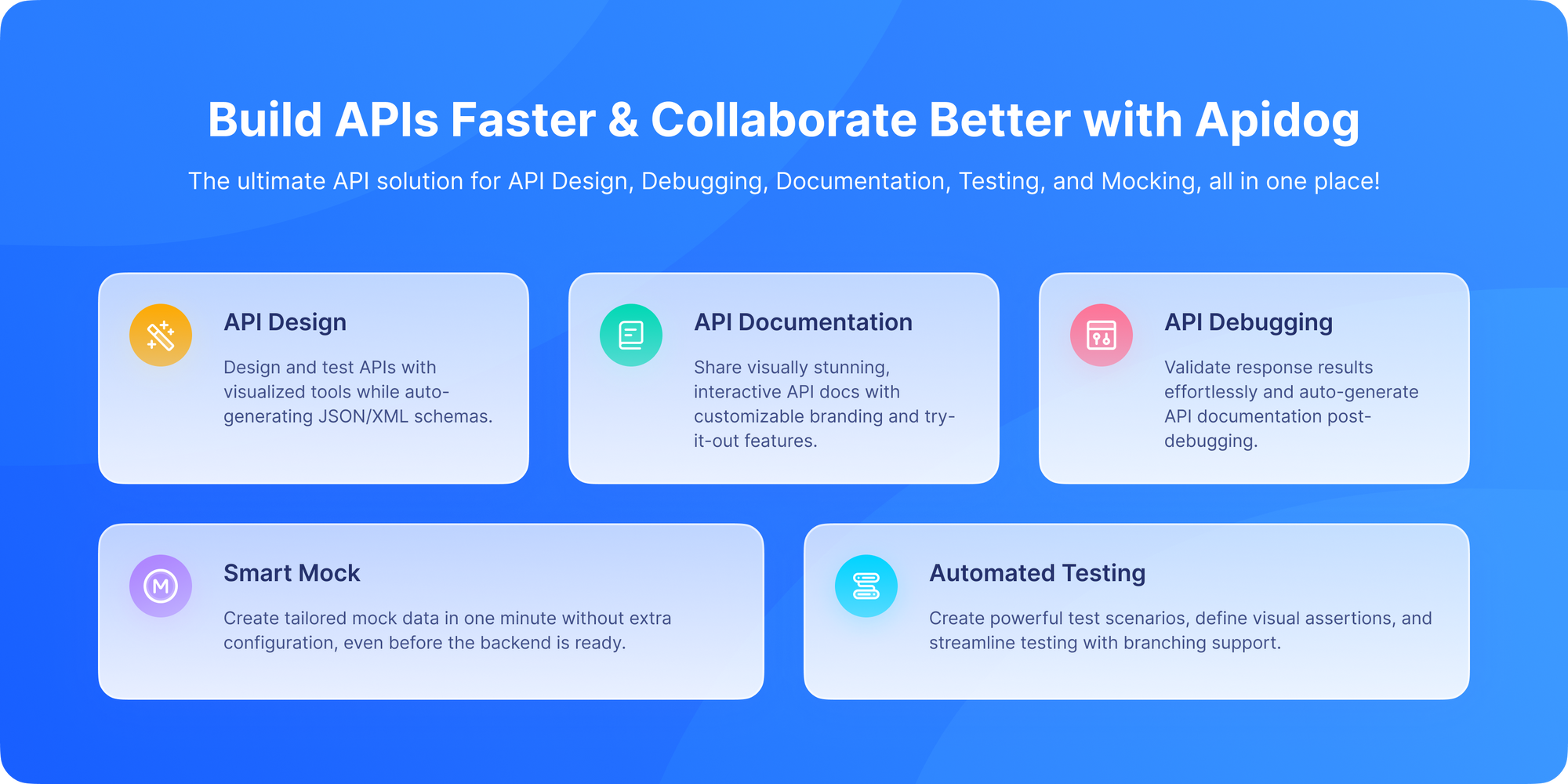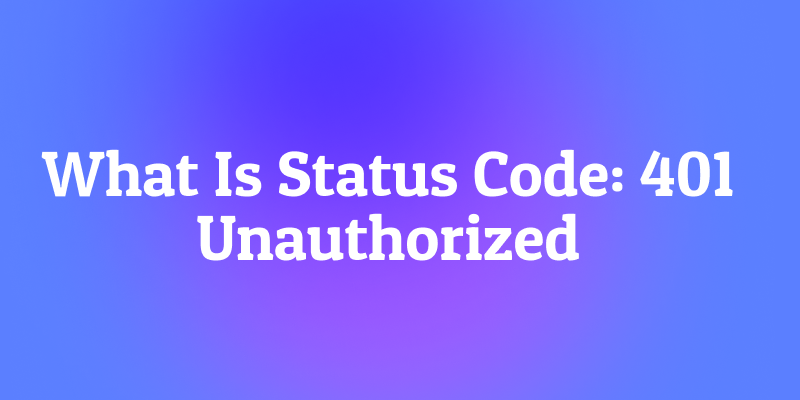You try to access your company's internal project management tool. You type in the URL, hit enter, and instead of seeing your dashboard, you're greeted by a stark login pop-up from your browser. You haven't even been given a chance to prove who you are yet. This is your first encounter with one of the most fundamental security codes on the web: 401 Unauthorized.
Despite its name, the 401 status code doesn't usually mean "you are forbidden." It means something more specific: "I don't know who you are. Please identify yourself." It's the digital equivalent of a bouncer at an exclusive club stopping you at the door and asking, "Can I see your ID?"
When browsing websites or interacting with APIs, encountering an HTTP status code often raises questions especially codes like 401 Unauthorized. Well, don’t worry you’re not alone. The 401 Unauthorized error is one of the most common HTTP responses developers face, and understanding it deeply will save you hours of debugging headaches. This response means the server has rejected the request because it lacks valid authentication credentials. But what does that really involve? How does it differ from other authentication or authorization errors?
This code is the cornerstone of web authentication. If you're a developer building anything that requires users to log in, or if you're an API consumer, understanding 401 is absolutely essential.
In this blog post, we’ll unravel the details of the 401 Unauthorized status code, explain why and when it occurs, and guide you on how to handle it effectively for both developers and users.
Now, let's break down exactly what 401 Unauthorized means, why it happens, and how you can fix it.
The Problem: Proving Your Identity
The web is built on a stateless protocol (HTTP). This means every request you make is independent; the server doesn't inherently remember you from one click to the next. For protected resources, the server needs a way to verify your identity with every single request.
The 401 status code is the server's standard mechanism for initiating this verification process. It's a challenge: "Before I give you what you want, prove you are who you say you are."
What Does HTTP 401 Unauthorized Actually Mean?
The 401 Unauthorized status code indicates that the request has not been applied because it lacks valid authentication credentials for the target resource.
The most important part of a proper 401 response is the WWW-Authenticate header. This header tells the client how to authenticate. It specifies the "authentication scheme" the server expects.
A classic 401 response looks like this:
HTTP/1.1 401 UnauthorizedWWW-Authenticate: Basic realm="Access to the internal site"Content-Length: 0
WWW-Authenticate: Basic realm="Access to the internal site": This is the server's instruction manual.Basic: This is the authentication scheme. "Basic" is the simplest method, where the client sends a username and password encoded in base64.realm="Access to the internal site": Therealmdefines a protection space. It's a string that the user can see (often in the browser's login popup) to understand what they are authenticating to.
As a result, the server refuses access to the requested resource until authentication is properly provided.
Put simply: the server recognizes your request, but you’re not allowed to access the resource without valid authentication.
Important note: despite the name, 401 doesn't always mean you're completely unauthorized. It often means your credentials are missing, expired, or incorrect.
Why Is 401 Unauthorized Important?
Authentication is the first line of defense for protecting web resources. The 401 status code is crucial because it enforces security by preventing unauthorized users from accessing restricted areas. When a 401 response is issued, it signals the client to prompt the user for proper credentials or refresh existing tokens.
Without this safeguard, sensitive data could be exposed to anyone.
The Authentication Dance: A Step-by-Step Breakdown
Let's walk through the most common scenario: Basic Authentication.
Step 1: The Initial, Anonymous Request
A client (like a web browser) tries to access a protected resource without any credentials.
GET /protected-resource HTTP/1.1Host: api.example.com
Step 2: The Server's 401 Challenge
The server sees the request has no authentication headers. It responds with a 401 and the WWW-Authenticate header.
HTTP/1.1 401 UnauthorizedWWW-Authenticate: Basic realm="Example API"
Step 3: The Client Retries with Credentials
The browser sees the 401 and the Basic scheme. It prompts the user for a username and password. It then encodes them (as username:password) in base64 and adds an Authorization header to a new request.
GET /protected-resource HTTP/1.1Host: api.example.comAuthorization: Basic dXNlcm5hbWU6cGFzc3dvcmQ=
(The string dXNlcm5hbWU6cGFzc3dvcmQ= is the base64 encoding of username:password)
Step 4: Success or Failure
The server decodes the credentials. If they are valid, it responds with a 200 OK and the resource. If they are invalid, it can send another 401 Unauthorized.
Beyond Basic Auth: Modern Authentication Schemes
While "Basic" auth is a good teaching example, it's insecure over plain HTTP (the password is easily decoded). Modern applications use more secure schemes.
- Bearer Authentication (The most common for APIs): This is used with tokens, like JWT (JSON Web Tokens). The
WWW-Authenticateheader might look likeBearer realm="Example API". The client then retries with a header likeAuthorization: Bearer eyJhbGciOiJIUzI1NiIs.... - Digest Authentication: A more secure challenge-response scheme than Basic, but less common than Bearer tokens today.
A modern API's 401 response might be:
HTTP/1.1 401 UnauthorizedWWW-Authenticate: Bearer realm="Example API", error="invalid_token", error_description="The access token expired"Content-Type: application/json
{
"error": "invalid_token",
"error_description": "The access token expired"
}
This gives the client very specific information about what went wrong.
401 vs. 403 Forbidden: The Critical Difference
This is the most common point of confusion. The difference is crucial:
401 Unauthorized: Means "Authentication is required and has failed or has not yet been provided." The client's identity is unknown or invalid. The problem is with the credentials.403 Forbidden: Means "The server understood the request but refuses to authorize it." The server knows exactly who the client is (authentication was successful), but that user doesn't have permission to perform that action. The problem is with permissions.
Analogy:
401: You try to enter a VIP lounge. The guard stops you and says, "Show me your ID." You have no ID or your ID is fake. (Authentication Failure).403: You show the guard your valid employee ID. He says, "I see you're an employee, but this lounge is for executives only. You can't come in." (Authorization Failure).
401 Unauthorized vs 400 Bad Request
Another common mix-up is with 400 Bad Request.
- 400 → The request itself is malformed (wrong syntax, invalid parameters).
- 401 → The request is fine, but credentials are missing/invalid.
So, 400 is about the shape of your request, while 401 is about your identity.
Common Causes of 401 Errors
As a user or developer, you'll see 401 errors for several reasons:
- Missing or expired access tokens.
- Incorrect username or password in Basic authentication.
- Lack of proper OAuth scopes.
- Misconfigured API gateway or authentication middleware.
- Clock skew or token validation errors.
- Attempting to access protected resources without logging in.
Examples of 401 in Web Applications
Imagine logging into a SaaS app:
- You try to access your account dashboard.
- If you don't include the correct login cookie or token, the server responds with 401 Unauthorized.
- The browser may then prompt you to log in again.
Example HTTP response:
HTTP/1.1 401 Unauthorized
WWW-Authenticate: Basic realm="Access to the staging site"
Content-Type: text/html
{
"error": "unauthorized",
"message": "Valid authentication credentials required."
}
Real-World Scenarios Where You'll See 401
Here are some everyday examples:
- Trying to access Gmail without being logged in.
- Calling the Twitter API without a valid API key.
- Accessing a private GitHub repo without authentication.
- Testing a secured REST API without tokens.
How to Fix 401 Unauthorized Errors as a User
If you're a user encountering a 401 error:
- Check that you are logged into the service.
- Verify you entered correct credentials.
- Try logging out and logging in again.
- Clear browser cookies and cache.
- If using tokens or API keys, confirm they are valid.
- Contact support if the problem persists.
How Developers Can Handle 401 Responses Gracefully
For developers, handling 401 correctly improves both security and user experience:
- Return clear and informative error messages with the 401 response.
- Include proper
WWW-Authenticateheaders indicating the authentication method. - Support token refresh or re-authentication mechanisms.
- Implement rate limiting to prevent brute force attacks.
- Log authentication failures for security auditing.
- Use HTTPS to secure credential transmission.
401 Unauthorized in APIs
For developers, 401 shows up a lot in API testing:
- You send a request to
/users/profile. - The API requires a
Bearer token. - If you forget the token or it’s expired → 401 Unauthorized.
This is where Apidog shines you can easily attach headers, tokens, and cookies in your requests to see exactly how the server responds.
Testing and Debugging 401s with Apidog

Getting authentication right is critical. 401 errors are among the most common issues developers face when integrating with APIs. Apidog is an invaluable tool for debugging them.
With Apidog, you can:
- Test Without Auth: First, send a request without any authentication headers to confirm the server returns a
401. This validates the endpoint is protected. - Inspect the Challenge: Apidog will show you the
WWW-Authenticateheader, telling you exactly what authentication scheme the server expects (e.g.,Basic,Bearer). - Configure Authentication Easily: Apidog provides built-in helpers to configure API keys, Bearer tokens, and Basic auth. You don't have to manually type the
Authorizationheader. - Manage Tokens: If you need a token from an OAuth 2.0 flow, Apidog can help you go through the authorization process and automatically capture the token for use in subsequent requests.
- Test Expiry: You can easily test what happens when a token expires by manually changing a valid token to an invalid one and resending the request.
This takes the guesswork out of authentication and saves hours of frustrating debugging. Apidog gives you a structured way to reproduce and fix 401 errors quickly. Download Apidog for free to improve your API lifecycle management and handle 401 errors efficiently.
Best Practices for Developers
If you're building a server that returns 401:
- Always include a
WWW-Authenticateheader. This is part of the HTTP spec and is crucial for clarity. - Use descriptive realms. The
realmshould help the user understand what they're accessing. - For APIs, provide a JSON error body. In addition to the header, a body like
{"error": "Invalid API key"}is very helpful for developers. - Choose the right scheme. Use
Bearertokens (like JWT) for APIs instead ofBasicauth for better security.
If you're a client receiving a 401:
- Check the
WWW-Authenticateheader to know how to respond. - Prompt the user for credentials or use your refresh token flow to get a new access token.
- Don't retry indefinitely with the same bad credentials.
Impact of 401 Unauthorized on Security and SEO
- Protects sensitive user data and backend systems.
- Prevents unauthorized API calls and data leaks.
- No direct SEO impact because 401 errors are seen as access issues and don’t represent broken pages.
Common Misconceptions About 401 Unauthorized
- 401 means user is blocked or banned: No, it means lack of valid authentication, not permanent denial.
- All authentication errors should return 401: Sometimes 403 or other codes are more appropriate depending on context.
- 401 causes page redirects: It signals authentication failure but doesn’t itself redirect to login pages (this is handled by clients).
Future of Authentication and 401 Errors
With the rise of:
- Passwordless logins,
- API keys,
- OAuth2 flows,
- Decentralized identity,
…the 401 Unauthorized status will remain central, even as new authentication methods emerge.
Security Implications of 401 Responses
When implementing 401 responses, keep security in mind:
- Don't reveal whether the username exists.
- Use generic error messages.
- Always send
WWW-Authenticateheaders to guide clients.
Conclusion: The Gateway to Secure Access
The 401 Unauthorized status code may feel frustrating at first, but it’s actually one of the most helpful signals you can get. It tells you that your request is fine you just need to prove who you are. It enables everything from logging into your email to securely accessing a banking API. It’s not an error to be feared; it's a conversation starter. It's the first step in the essential process of proving identity on the web.
HTTP 401 Unauthorized is a foundation of web security, signaling when clients must prove their identity to access protected resources. Understanding this code helps developers build secure applications and guide users through authentication flows properly. Handling 401 errors gracefully enhances trust and usability, key pillars of successful digital products.
So the next time you see a login pop-up or get a 401 error from an API, you'll know exactly what's happening in the conversation between the client and server.
For developers, mastering 401 is essential, especially when working with APIs, OAuth, and JWT tokens. And if you're stuck? Don't waste hours manually debugging. To take your API testing and debugging to the next level including analyzing complex authentication scenarios and 401 responses, download Apidog for free. It puts powerful tools at your fingertips to understand and manage your APIs with confidence, test your requests properly, and you'll be fixing 401 errors in no time.



